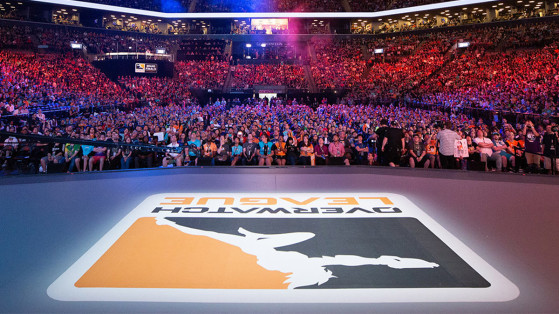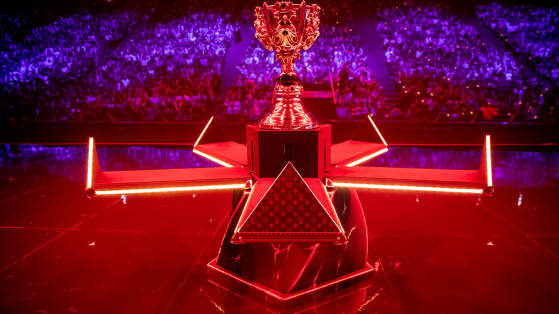When talking about the current state of esports, it’s almost impossible to avoid mentioning one key aspect: the audience. They are more important than they seem, as the audience is the direct result of countless hours of work carried out by key members in the scene.
For the players, the orgs, the publishers, the tournament organisers, and above all else, the sponsors and investors, the audience represents the fruit of their collective labour. The audience is the perfect translation of the influence that esports can have on a population.
And yet for many, the audience often tends to be a litmus test, an indicator for the viability of a game’s future in epsorts.
In a way, this isn’t entirely inaccurate. In a global society in which your free-time has become one of your most precious and expensive resources — something that YouTube, Netflix, Twitch, Twitter, and other sources of distraction are acutely aware of —it would be suicidal for brands to overlook the visibility that an esports title can bring to them.
Simply put, as far as advertising and investment are concerned — including the need to reach a new demographic — potential visibility has always been the determinant factor.
Up until recently, it had always been difficult for brands to get involved with the Wild West industry that is esports. This rings even more true for non-endemic sponsors, those being companies that don’t presently have a direct link to gaming or esports in general.
These brands have to invest in games where the popularity, the economic potential, the cultural weight, the genre, or even the way that the professional circuit functions may change completely from title to title. For brands, this alone makes taking a step into esports a daunting prospect.
Does understanding and measuring the esports audience end up being vital in the long term? Yes, as you need to understand it to be able to anticipate total viewer reception and engagement. It also has the benefit of providing additional visibility and offering a deeper understanding of streaming figures, which often suffer from a lack of credibility and transparency.
These figures have occasionally been manipulated with the goal of proving that esports will soon overtake traditional sports in terms of audiences. These are two separate, incomparable worlds that don’t even operate on the same playing field, with the latter mostly shown on TV and the former almost existing solely on streaming platforms.
However, all of this may change with the introduction of a regulated metric: the AMA.
A Universal Metric for Viewership
In an article for Adweek, Mitch Reames introduced the concept of AMA as “simple maths instead of misleading metrics”
So, how is Average Minute Audience [AMA] — sometimes referred to as Active Concurrent Viewers [ACV] — calculated?
In an interview with the now-defunct blog The Next Level, Nielsen, the organisation behind this figure, described the process behind AMA as follows: “We calculate AMA either by averaging time-stamped viewership …over the course of a broadcast, or by dividing Total Minutes Watched by Total Minutes of Broadcast.”
According to the founders of the OWL and the COD league, Activision Blizzard — who were represented in this interview by then-Analytics Executive Kasra Jafroodi — see AMA as “the most fair representation of viewership for all live content and it is directly comparable with traditional sport numbers. It’s extremely helpful to everyone in the ecosystem (brands, agencies, investors, and press) to truly understand how esports performs against everything else.”
For Nicole Pike, managing director of Nielsen Esports, there is no alternative: “Based on the data currently available for esports viewership, AMA is the metric most closely comparable to television ratings, which is the standard advertisers and sponsors use for viewership measurement. Allowing easy comparability of esports to these other forms of entertainment content is critical in driving trust and transparency for the industry.”
It should be understood that one of esports’ quirks relies on the fact that it is currently nearly exclusively shown on the internet. The industry has its own set of unique codes and stats, especially when calculating the viewing figures for a tournament. Unique viewers, concurrent peak viewers, and total hours watched: these metrics are a lifetime away from what you can expect from competing TV broadcasts of traditional sports.
If esports are content to rely on these datasets and spread them throughout news shows, in the written press, and in press releases from publishers, then that will be their hill to die on. This is not only due to the lack of accuracy associated with these figures, but also questions that arise for sponsors, who are used to very different data sets when doing business in other media.
This is even more relevant in TV, which is a member of what we call ‘linear media’. Even though several significant esports events have been shown on TV, such as the finals of the OWL 2019 on ESPN, most of the time they are shown online, on streaming platforms like Twitch or YouTube Gaming to name a few.
It’s here that any statements about how difficult it is for sponsors and investors to get involved with esports begin to make sense. As they’ve long since become accustomed to the way that traditional media do things, asking these companies to now deal with dubious numbers and figures may be difficult to take, especially when they’re from questionable sources online — and whose loyalties can often be called into question.
AMA is designed to be compared to traditional metrics, and as such shares the dual responsibility of not only regulating figures in esports, but also transmitting them to the rest of the world in a clear manner.
Competiveness and Transparency in the Firing Line
There may be a push to crown AMA as the best metric on the market, but who exactly is behind it? It seems that this agenda may belong to Nielsen, the global data measurement and analysis firm, which describes itself as providing “the most complete and faithful vision for consumers and global markets.”
In addition to showing off its expertise in this industry, Nielsen can count on 90 years of experience, a spot in the top 500 largest companies in the US, and a presence in over 100 countries (90% of global population) to justify its entry into the scene. In short: they know what they’re doing.
Therefore, it’s hardly shocking that they’ve put forward an excellent idea such as AMA to advance the development of esports, as well as uniting some of the biggest players in the scene under their banner.
This is constantly alluded to during the interview: “We are currently working with multiple publishers (including Activision Blizzard & Riot Games) and event operators (including ESL) to increase the use [of AMA] across the industry.”
Their reasoning? “A common theme was their desire to create an even more detailed way to break down esports audiences and help companies make commercial, data-driven decisions (…) Activision Blizzard was the first company to proactively reach out and tell us that they were looking for a way to compare audience figures from their events in a way similar to traditional sports events, by speaking to announcers, to sponsors, and to brand marketing specialists.”
It’s true that, with a universal metric, comparing one event's figures to another's will become more reliable, as will comparing esports to other sources of distraction, such as sports. Esports enthusiasts will now be able to discover which events draw in the highest viewing figures. Publishers will now be able to access more reliable data, which will help them market their products to sponsors. Esports organisations will be more aware of which tournaments to invest in if they wish to make good on their contributions.
It's an undeniable fact that AMA will go on to revolutionise the esports ecosystem.
This point of view is also held by Doug Watson, Head of Esports Insights at Riot Games: “We need to share standards for what numbers mean, how they’re calculated, and how to interpret them. The faster we can do this, the faster everyone can get on the same page and facilitate better conversations, which will continue to grow the industry. The fans continue to grow, the events only become more spectacular and being able to express that in a meaningful way to non-endemics is the next step to take.”




